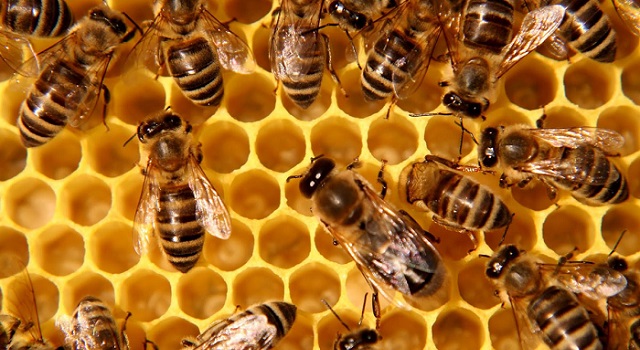
Lamwo, Uganda | THE INDEPENDENT | Beekeepers in the Acholi sub region are noticing a reduction in the quantity of their honey due to extreme weather patterns.
Over the past few years, many parts of the country have experienced prolonged rainfall which caused flooding while others experienced drought.
For instance in 2019, many districts in East Acholi experienced a lot of rain accompanied by floods, which farmers say is not a conducive environment for bees to produce enough honey.
Charles Picha, a 31-year-old beekeeper in Lamwo district has been a beekeeper since he was 14 years. According to Picha, bees produce a good quantity when the weather has been favourable to crops and trees, making them produce enough food for their honey production.
Picha reveals that before the harsh weather, he could harvest more than 50 kilograms of honey from 15 beehives, but this year, he got less than 20 kilograms.
Patrick Olweny, another beekeeper in Lawmo district says he has also noticed a reduction in the quantity of honey from the same number of hives. He says the very cold and hot weather extremes have made the bees so immobile that even his new hives are not attracting bees.
Olweny says in October-November this year, he checked his 10 beehives and got less than 3 kilograms of honey, compared to between 58-60 kilograms he used to get during the same period when the weather was favourable.
Barnabas Opiyo, the Kitgum district entomology officer says bees are more productive during the warm season, which facilitates the production of honey, wax and propolis.
Opiyo says even the dry spell affects the plants that serve feeds for the bees, hence affecting their honey production.
According to Wycliff Odong, the Director of Kitamu Honey Producers in Kitgum district, the weather changes have made the bees change their timetable of producing honey, to rhyme with periods when they have enough to feed on from the environment outside the beehives.
Odong argues that since bees are feeding more on their honey due to a shortage of food, beekeepers should check their hives more regularly, unlike in the past where they could do after every three months.
Odong explains that bees take three months to make combs, before producing honey during the dry season when their movement isn’t restricted by coldness.
“During the dry season, they can work for 10 hours which is good for honey production. But during very cold weather, they work for only 6 hours, meaning they will spend more time in the hives and rely on the honey for food,” Odong said.
*****
URN
 The Independent Uganda: You get the Truth we Pay the Price
The Independent Uganda: You get the Truth we Pay the Price



